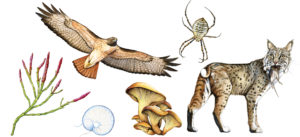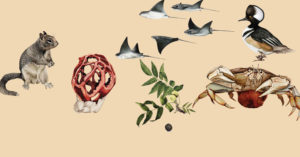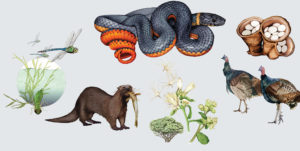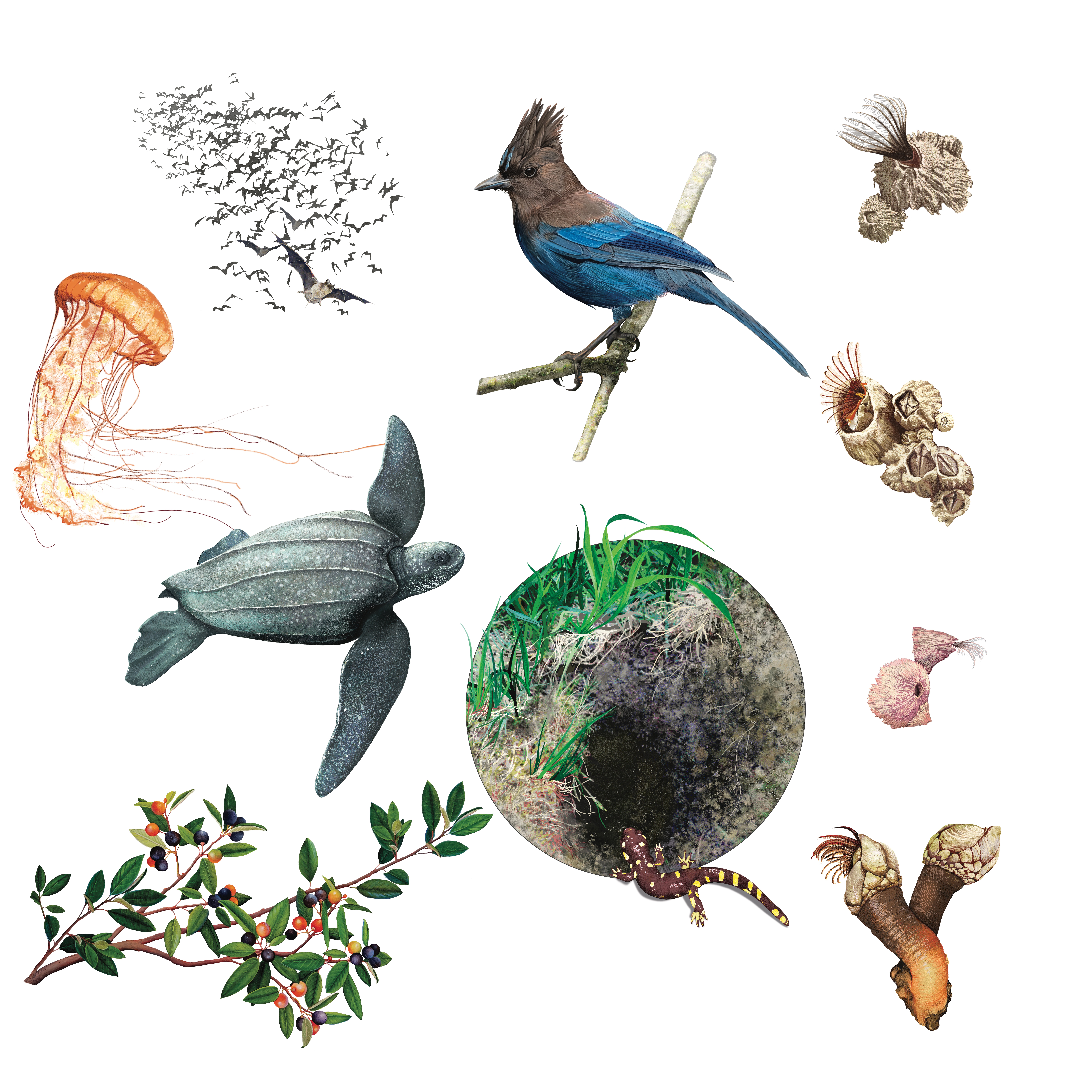
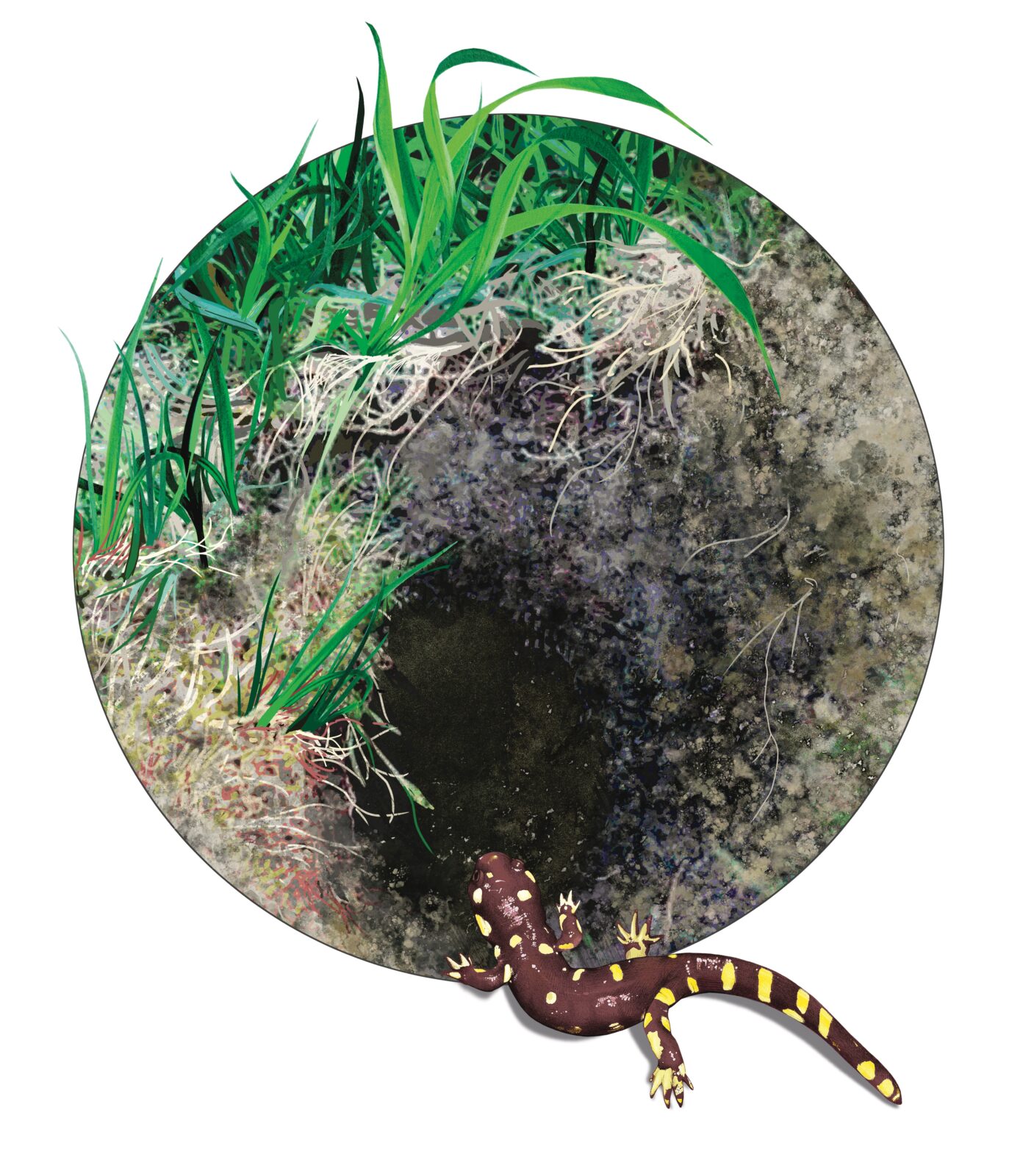
Sleepy tigers
Come summer, members of the federally endangered or threatened populations of California tiger salamander (Ambystoma californiense) may be found trudging away from their natal waters to begin the rest of their lives. Which are often long, and mainly spent underground. Specifically, they like to take up in the cool, damp tunnels dug by California ground squirrels in the grasslands of the outer Bay Area. It’s a low-key life. The endemic salamanders venture from the safety of the burrow at night to eat crickets, snails, worms, other amphibians—whatever comes in reach. By light, they’ll be back underground, avoiding the fierce heat, enjoying their
little-studied subterranean lives.
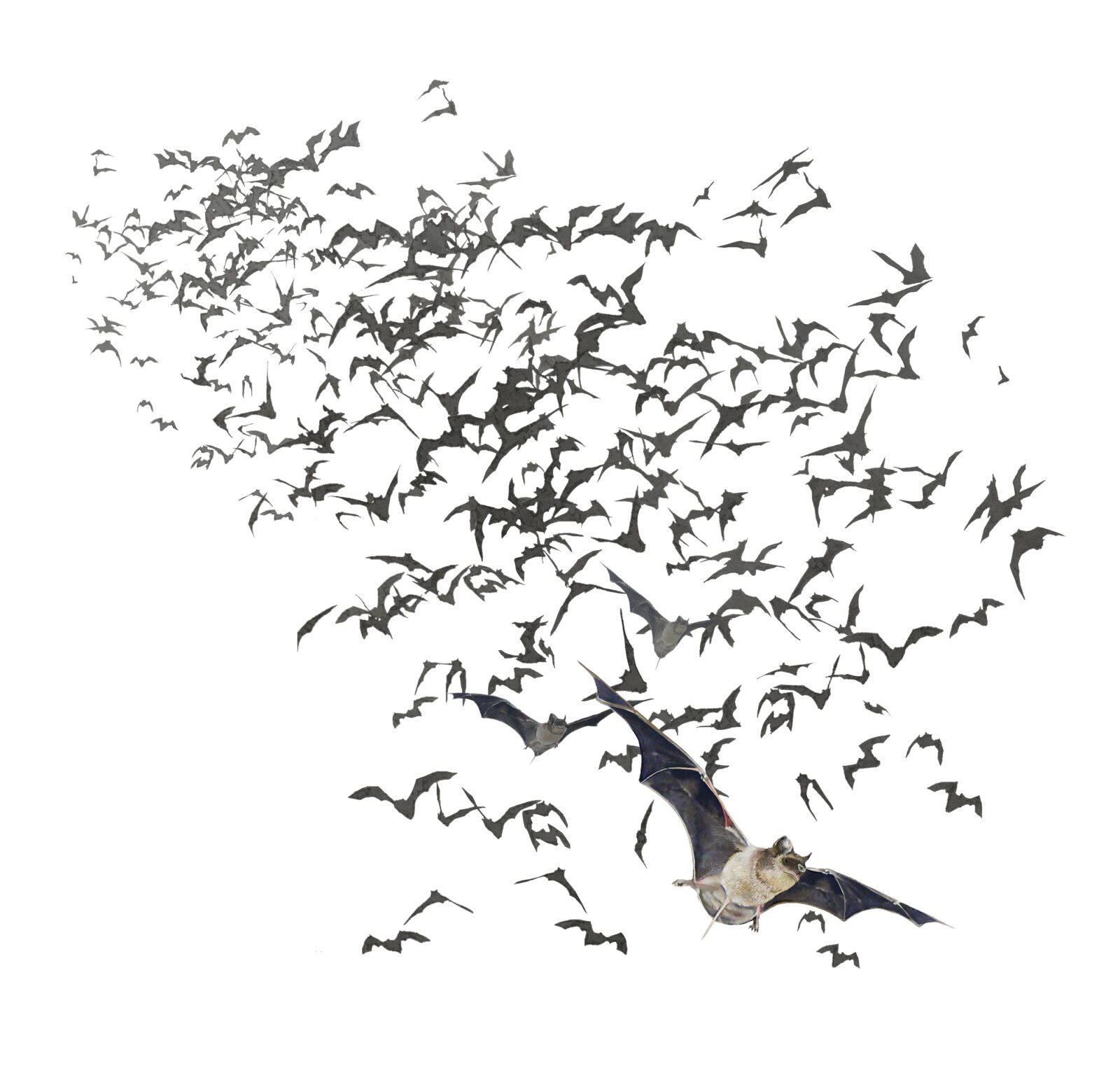
Mammalian murmuration
Imagine a great winged serpent emerging from its refuge, undulating, growing longer and longer as it mounts the sky! That’s kinda what Mexican free-tailed bats (Tadarida brasiliensis) resemble, en masse, as they stream from their roost beneath the Yolo Causeway east of Davis. Some 250,000 bats take to the twilight air, thick with tasty insects, every night. The bats arrive here from Mexico in spring and stay through summer to birth and nurse their young. Check the Yolo Basin Foundation for bat walks and talks.
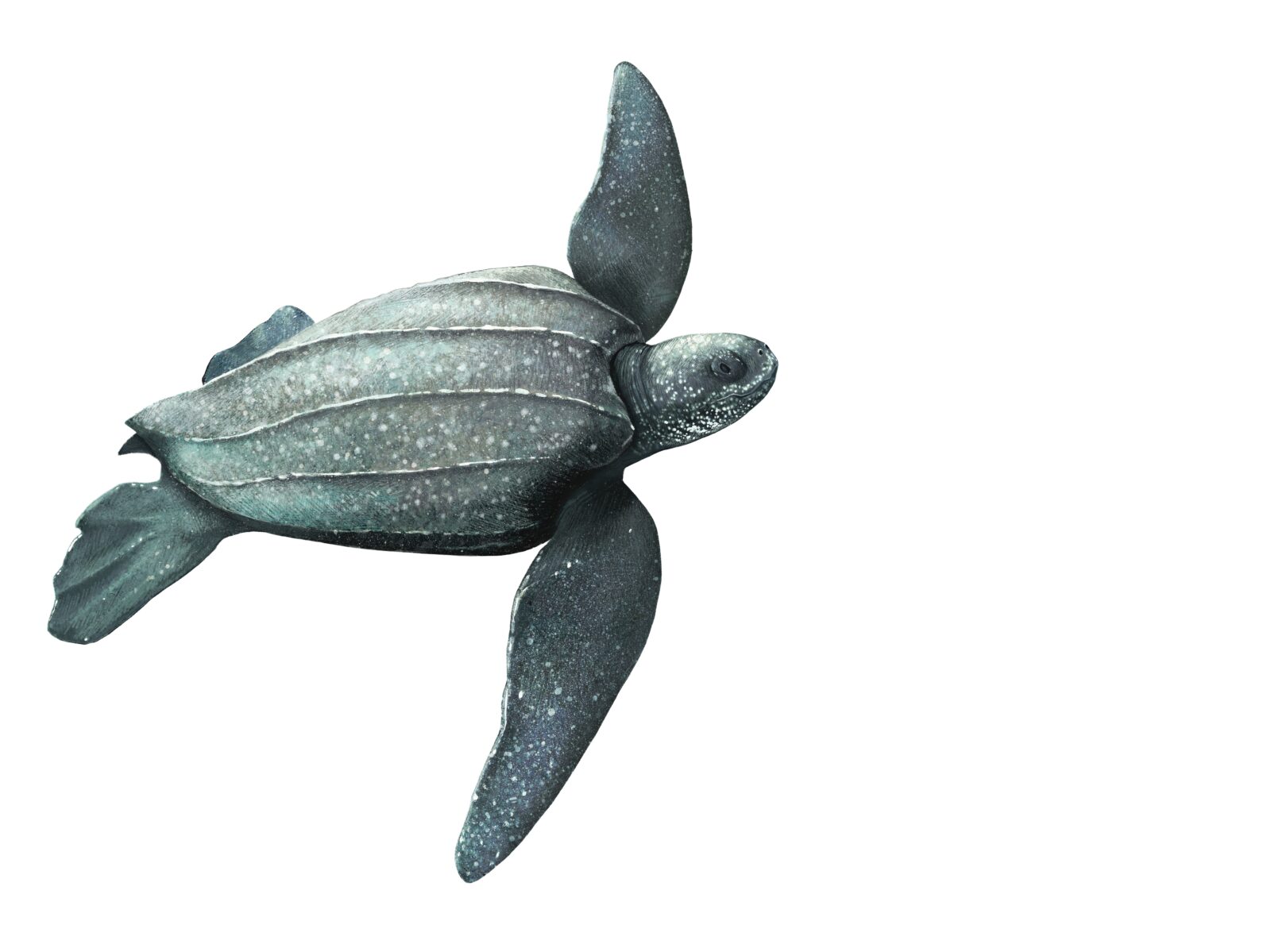
Megaturtles
While scanning the ocean’s surface for whales or dolphins, or maybe when you’re out fishing in the Bay Area’s coastal waters this summer, also watch for a stout isosceles triangle breaking the surface: it may be the head of a Pacific leatherback (Dermochelys coriacea). These endangered 1,000-pound giants, the world’s largest turtles, linger along our coast from summer through fall to forage a kind of jellyfish called Pacific sea nettles (Chrysaora fuscescens), before making a more than 6,200-mile swim to lay their eggs on the shores of Papua, Indonesia.

Forbidden fruit?
In August, things are dry, dry, dry in the Bay Area. Which makes ripe and juicy black California coffeeberries (Frangula californica, previously Rhamnus californica) that much more delectable if you’re a jay, robin, cedar waxwing, thrush, or any other avian coffeeberry-lover. Or an insect, or a mammal. Coyotes gorge on the fruits. You might be wondering if you should too. The shrub’s berries aren’t poisonous and don’t taste bad, but they can be a laxative, so consider your decision carefully.

Jay secrets
Whatever pine, redwood, or other coniferous forest you might enjoy this summer, there’s a good chance a Steller’s jay (Cyanocitta stelleri), with its fancy crest and flashes of blue, will be nearby … probably watching your snacks. Find one of those dazzling feathers, and you’ll discover a secret: they’re not blue at all. Microscopic structures in the feathers reflect and scatter light, enabling us to see the blue wavelengths. But beware. While you’re busy admiring that feather, that smarty-pants jay is stealing your lunch.
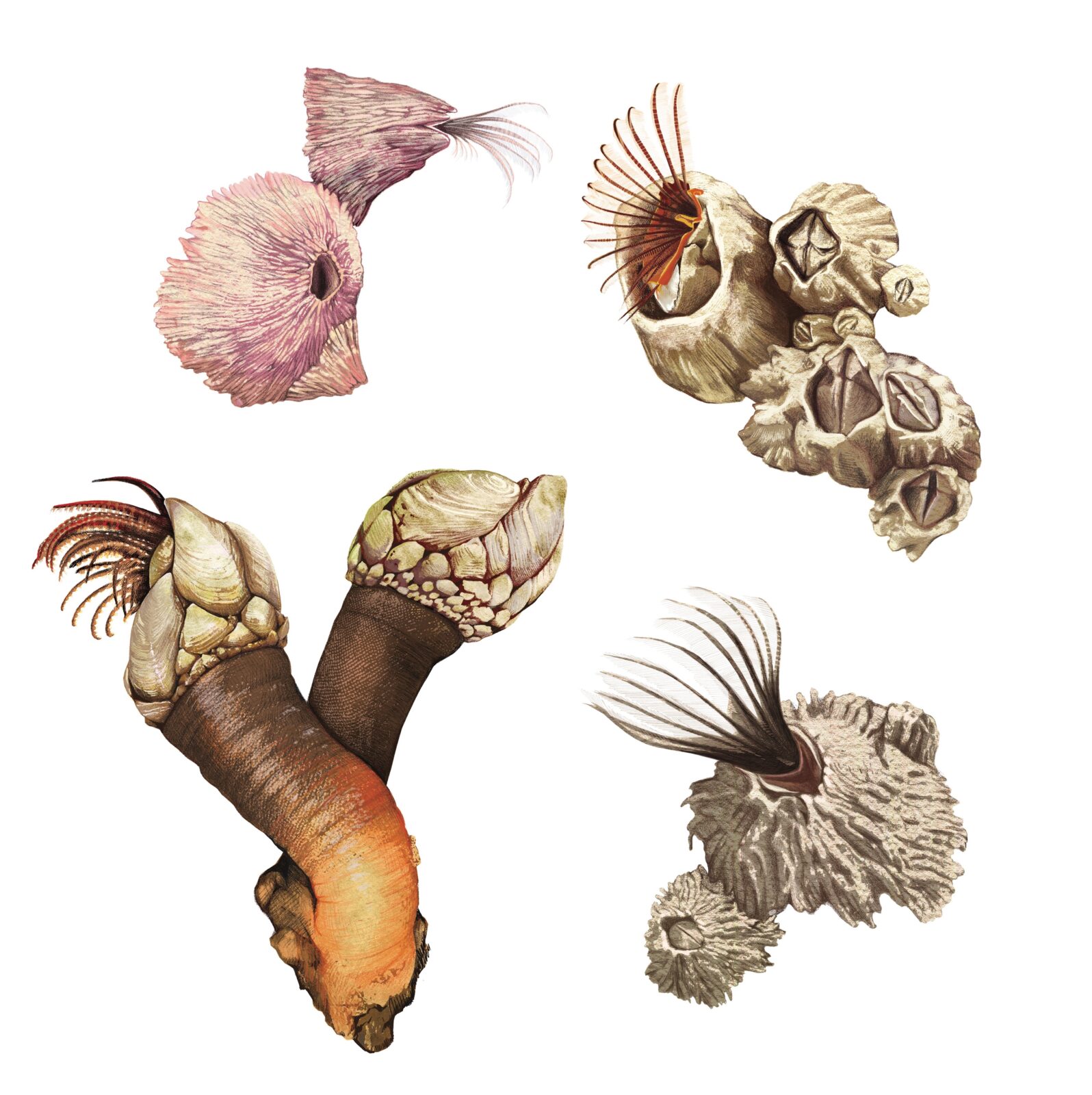
Crusty crustaceans
Barnacles are such a calciferous constant on the shore and seascape surfaces, we hardly remember there’s life packed into that stubbly, sharp layer. But we owe them much. Charles Darwin studied barnacles for eight years, gleaning great insight from them while assembling On the Origin of Species. Most Bay Area barnacles spawn in summer, each one releasing tens of thousands of tiny larvae into the sea to drift. If they survive, they can settle down to a stationary life.
Genuses: goose barnacles (Pollicipes), thatched (Semibalanus), acorn (Chthamalus and Balanus), and pink (Tetraclita).

